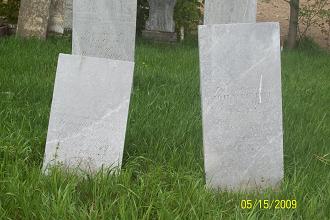The sun is shining and the air is warm. It’s a perfect day for a walk through the cemetery. Yes, you read that right–the cemetery. Cemeteries are quiet, peaceful, and wonderful places for remembrance. They also provide useful information for genealogists.
Even if you already know the date of your ancestor’s death, a gravestone can still help you. It may provide your ancestor’s maiden name or an inscription that you will want to document. The gravestone may also be located near the grave of a child who died at an early age, a second spouse (my great-grandmother is buried next to her second husband and his third wife), or a war plaque.
There are several types of cemeteries.

Public Cemeteries
Public cemeteries are owned and maintained by the town they are located in. Taxpayer money pays for their upkeep. Records for these cemeteries are accessible to the public, and are typically located at the town clerk’s office or courthouse.
Sometimes public cemeteries are not maintained, either due to a lack of funding or abandonment. Abandoned cemeteries often house old gravestones, which can often be difficult to read, are fallen over, or non-existent.
Family Cemeteries
Family cemeteries are privately owned and burial records can be difficult to locate. Sometimes the historical society or library will have these records, or they may have been handed down within the family. These cemeteries may be large, or they could consist of just a few gravestones located in a field or area of woods.
Church Cemeteries
Church cemeteries are owned and maintained by a church. They may be located next to the church or at another location. Burial records can be difficult to locate since they are often moved with the minister. However, they may be located at the church or a local university.
National Cemeteries
The US Department of Veteran Affairs typically maintains national cemeteries; however The Department of the Army and the National Park Service also maintain some of them. The cemeteries contain the graves of veterans and their spouses, and other US military personnel. You can search for burial locations at the US Department of Veteran Affairs’ website.
Related articles:
Three Ways to Learn More About Genealogy

